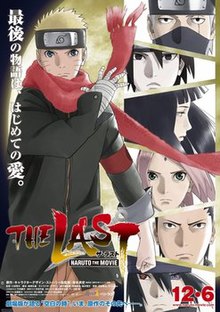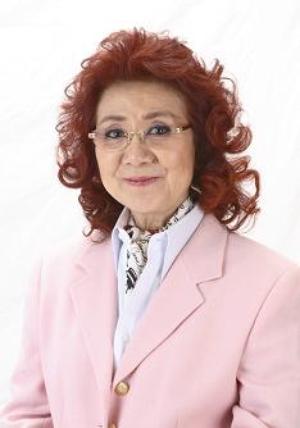As mentioned in concluding sentences of the previous episode, while Howard and Alan were working on finishing
The Little Mermaid's score and beginning preliminary work on the score of
Beauty and the Beast, Howard was working on a project of his own to pitch to Disney chairman, Jeffrey Katzenberg and Roy Disney. His pitch consisted of a forty-page treatment detailing characters, preliminary song lyrics, and a plot about a young twelve year old boy with a simple motivation, to make his mother proud by any means possible. Along his journey, he is accompanied by three friends, falls for a vain and self-centered princess, and encounters two magical spirits (a spirit of a ring and a spirit of an oil lamp, the former serving as the narrator of the story), all while combating against an unnamed wazir and his parrot sidekick, Sinbad. The project he planned to pitch was an adaptation of and early version of what would be come
Aladdin, based on the
Arabian Nights tale of the same name. While Howard's initial draft of the film would contain a few similarities and similar elements to the film released in 1992, his initial draft was significantly different in terms of plot, characters, and the musical score.
The first set of these major differences from the initial draft lies in the film's title character, Aladdin. Unlike the final film in which Aladdin is an adult voiced by Scott "Steve from Full House" Weinger accompanied by a monkey voiced by Frank Welker, Aladdin in the initial treatment was a twelve year old boy with three human friends named Babkak, Omar, and Kassim, along with another lost character named Abbi/Abby (whom unfortunately was not restored for the stage adaptation). Also unlike the final film in which Aladdin was orphaned by his adulthood, Aladdin's mother is still alive in the original draft and is the main source of motivation. The original Aladdin, unlike his finalized counterpart, did not only want a better life for himself, he wanted to make his mother proud and atone for his thieving ways. While this portion of the original motivation did not make it into the final film, it was thankfully restored for the stage adaptation, along with a song that better explains this goal (and it happens to be my favorite Disney song of all time),
Proud of Your Boy, which will be discussed in further detail later on when the plot elements are compared between final film and draft.
The second set of major differences lie in the characters of Princess Jasmine, and the wazir and parrot that would later on become Jafar and Iago, respectively. Jasmine was originally not the benevolent and kindhearted princess that she was in the final film. Matter of fact, she was a bit of a "spoiled brat" and did not begin to change and develop until after she met Aladdin in the guise of a prince, better known as "Prince Ali" in the final film. According to Lost MediaWiki's article on the initial treatment, the initial version of Jasmine was "a purely comic creation; the ultimate in pampered spoiled brattiness". She would not be the only character living in the palace to have significant character changes, as the characters that would become Jafar and Iago in later drafts also were different from their final counterparts.
To start, Jafar's initial version was nameless; simply referred to in the treatment as "The Wazir". Like in the final film, he was a combination of the royal vizier, the vizier's son, and the magician from the original
Arabian Nights story. However, his personality and temperament were similar to the finalized version of his parrot sidekick, known as Sinbad in the original treatment (a reference to the stories of
Sinbad the Sailor in the
Arabian Nights). Like how The Wazir's personality was similar to the final version of Sinbad (later named Iago), Sinbad's initial personality was similar to the final version of The Wazir (later given the name of Jafar as production progressed). Despite their personalities being switched, their motivation and goals were essentially the same, retrieval of the magic lamp and become ruler of Baghdad (later named Agrabah). Unfortunately, not much is known about the original version of Jasmine's father, the Sultan, aside from the fact of him being called "Sultan Hamed" in the initial draft (the first name of the sultan was later restored for the stage adaptation of the film). Before moving on to the differences in plot and score, there is one more character that needs to be covered, and a mention of a similar character that was cut from the film.
If those reading this have seen the stage adaptation of the movie and wondered, "the guy playing Genie is nothing like how the late Robin Williams or Dan "Homer Simpson" Castellaneta portrayed him", then you would be surprised to hear this fact; James Monroe Iglehart's version of Genie is portrayed more similarly to Howard's original concept of the character rather than the portrayal by Robin Williams. Originally, Genie was inspired by jazz musicians such as Cab Calloway and Fats Waller, and granted unlimited wishes to Aladdin and The Wazir instead of three wishes like in the final film. There was also a Genie of the Ring, who served as the first incarnation of what would later become the peddler in the final film, appearing at points in the story to provide commentary through song, one of the various plot differences from the film we all know.
Compared to what was ultimately released to the movie-going audience, the plot and score not only have significant differences between the two, the two versions of the film almost feel like entirely different movies with similar scenes and songs. According to John Musker, the film's setting was a "Hollywood-ized Baghdad" in which a young Aladdin and his friends, Babkak, Omar, Kassim, and Abby would roam. Currently, it is unknown if Aladdin still stole for him and his mother to survive, but if that was the case like in the final film, it was also because Aladdin refused to work (as evidenced in the song
Babkak, Omar, Aladdin, Kassim, a prototype of the final film's
One Jump Ahead).
Like in the finalized version, the opening number was
Arabian Nights, albeit with significant differences in length, lyrics and what character is singing the song. Also unlike the released film,
Arabian Nights had four reprises throughout the story, in which the Genie of the Ring would appear and either introduce a character (which was the reason for Reprise one), provide commentary on a situation (Reprises two and three), or serve as an early version of the finale (Reprise four, which finally saw the light of day when it served as the closing number for not only
Aladdin and the King of Thieves,
but the entirety of the
Aladdin saga, as well as being restored in its proper position for the stage adaptation). After Aladdin and his friends are introduced as well as the theorized early version of the "One Jump", we are treated to the first reprise of
Arabian Nights, which introduces The Wazir, The Sultan, Sinbad the Parrot, and Princess Jasmine. Succeeding the reprise was originally going to be a song named
Call Me a Princess, but the song was cut before Howard finished the treatment
, as it proved to be unpopular with himself and Alan (and those who saw the initial versions of the stage musical before Broadway, though I found it interesting as it shows how far Jasmine has evolved as a character).
When cutting back to Aladdin, we are introduced to his "uncle", which is actually The Wazir in disguise, leading in to
Arabian Nights Reprise Two, sung as Aladdin and his "uncle" are searching for both The Cave of Wonders as well as the magic lamp inside of it, and Aladdin is presumably given a magic ring with a Genie inside, a nod to the original story that inspired the film. Like in the final film, Aladdin would somehow be trapped in the cave and forced to release Genie from the lamp. The release of Genie would lead into a jazzier and somewhat sinister early version of the popular
Friend Like Me. After Aladdin returns home to his friends and his mother, it is here where Aladdin's motivations are revealed through the beautiful song,
Proud of Your Boy. Unfortunately, as Aladdin plans to win the heart of Princess Jasmine by masquerading as a prince, he begins to grow cold and distant towards his friends, presumably leading into the song
How Quick They Forget, where Babkak, Omar, and Kassim lament on losing the friendship of Aladdin to the princess. However, friendships would presumably be regained either before or after the third reprise of
Arabian Nights, which showed either Aladdin or Jasmine being imprisoned, and served as a lead-in to
High Adventure in which Aladdin enlists the assistance of Babkak, Omar, Kassim, and The Genie of the Ring (I guess he did have some role in the story aside from narrating, but like the rest of the original plot, the extent of his role is mostly unknown). On his adventure to save Jasmine, he begins to realize his feelings for Abby as well as the feelings she reciprocated for him, and ultimately chooses her instead of Jasmine upon saving the city of Baghdad. The Wazir's fate in the initial treatment is unfortunately unknown.
Unfortunately, though Roy Disney and the higher-ups at Disney enjoyed Ashman's treatment, it was unfortunately passed on and shelved. Howard had considered getting the rights back and creating the film independently without Disney's involvement, but ultimately decided not to follow through with the plan and the treatment remained in the Disney archives.
If one wishes to view the original treatment, a copy is available for viewing at
The Library of Congress as part of a series of works known as
The Howard Ashman Papers, and another copy presumably exists in the
Disney Animation Research Library. In the next episode, we will jump forward to late 1989-early 1990, when production on
Aladdin resumed, and detailing the trials and tribulations rose throughout.
Special Thanks/Sources:
Mrs. Sarah Ashman-Gillepsie (sister of the late Howard Ashman) for taking the time to answer my questions about Howard's early years at Disney and giving her blessing on pursuing this ambitious project
"Aladdin (Howard Ashman Original Treatment)." Lost Media Wiki.
N.p., n.d. Web.
<http://lostmediawiki.com/Aladdin_(Howard_Ashman's_original_film_treatment;_1988)>.
Ashman, Sarah, and John Musker. "Da Doo Blog: John Musker Question Countdown #9." Da Doo Blog Part of His World Sarah Ashman Gillespie.
N.p., 21 Feb. 2012. Web. 06 Aug. 2016.
<http://howardashman.com/blog/john-musker-question-countdown-number-9/>.
Ashman, Howard, Alan Menken, Marvin Hamlisch, Alan Menken, and Marvin Hamlisch. Howard Sings Ashman. PS Classics, 2008. MP3.
Menken, Alan, Howard Ashman, and Tim Rice. The Music Behind the Magic. Walt Disney Records, 1994. CD. Discs 3 and 4
Aladdin. Dir. John Musker and Ron
Clements. Prod. John Musker and Ron Clements. By John Musker, Ron
Clements, Alan Menken, Howard Ashman, Tim Rice, Scott Weinger, Robin
Williams, and Linda Larkin. Buena Vista Pictures Distribution, Inc.,
1992. DVD.












.jpg)






